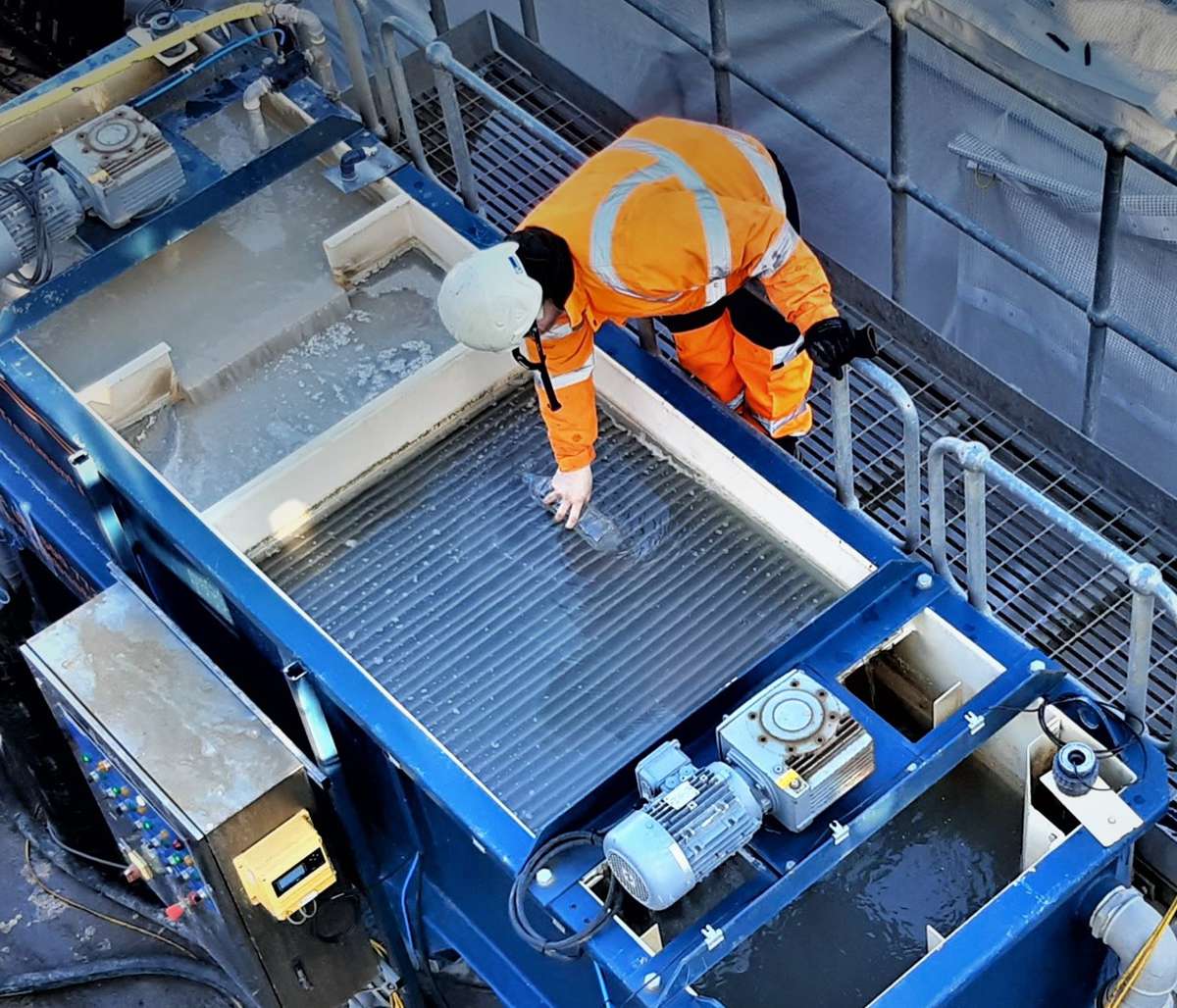Siltbuster explores Hydrodemolition Blast Water Treatment
Siltbuster’s Business Development Manager, James Tucker, discusses the potential environmental impacts caused by hydrodemolition works and how to prevent harm.
Hydrodemolition is the process of using ultra high-pressure water jets to remove damaged concrete without affecting other parts of the structure or the steel reinforcement contained within. Once the damaged concrete is removed and the rebar exposed, the structure can be re-cast in-situ. This saves significant sums over complete replacement or repair after breaking/cutting using mechanical means.
However, when cutting concrete with water, freshly exposed lime reacts with the water to produce a highly alkaline (high pH) wastewater. Because pH is logarithmic it is not possible to treat via dilution and even a small flow can kill aquatic life for multiple miles downstream.
As a popular method for bridge refurbishment works, it is clear that a solution is required, and the wastewater cannot be allowed to drain away. It is important to collect/contain the wastewater, but transporting the water for off-site treatment is expensive.
Treatment on site
Treatment on site offers a cost effective and environmentally conscious alternative to tankering. By utilising compact modular treatment solutions with automated control of the pH, Siltbuster’s range of specifically designed equipment reduces the risk of causing a pollution incident.
Whether flow is generated from a single hand lance or a larger flow robotic system, there are a range of system sizes to suit. Multiple treatment stages are used to correct the pH and remove solids, producing a treated water safe to discharge.

Example – Major bridge refurbishment works in Durham
The New Elvet Bridge over the River Wear in central Durham was built in 1975 and is used by about 17,000 vehicles a day. In July 2020 it was closed for essential maintenance which included:
- Lifting the entire 490 tonne centre span
- Removing and replacing the southern span
- Removing, repairing and recasting the bridge’s joints
- Installing a concrete protection system
- Improving waterproofing and drainage
The overall objective
A bespoke truss system lifted the entire bridge deck circa 300mm to expose the concrete joints. One of the project’s most crucial events was the hydrodemolition of defective concrete to expose the concealed reinforcement bar and allow the bridge joints to be reconstructed.
The specialist hydrodemolition contractor generated circa 10m3 per hour of blast water which was highly alkaline and laden with tiny particles of concrete. If this blast water escaped the bridge and into the River Wear it would cause a major pollution incident and even kill fish.
Siltbuster were approached to provide a robust mobile water treatment solution to allow the treatment and disposal of excess water safely to the River Wear, without transportation to an off-site treatment facility. Over the course of the project, the Siltbuster equipment removed the need for almost 600 vehicle movements, a significant cost and environmental saving.

Solution
Siltbuster visited the project in August 2020 and started treatment for the contractor in October 2020 using a Siltbuster PMPU20 treatment unit.
The Siltbuster PMPU20 is an integrated solution which comprises two dedicated reaction tanks and a lamella clarifier for the multistage treatment of alkaline conditions and retention of settling suspended solids. This sequential philosophy reduces the amount of reagent required per cubic metre of water (in this case carbon dioxide (CO2)), but also reduces the hardness/alkalinity and improves the treated water quality upon discharge.
The PMPU20 has a typical continuous operating range of up to 20m3/h and its own peristaltic slurry pump controlled via an asymmetric timer. The operator optimises the timing system to both dispose of captured slurry and recirculate it to from a High-Density Sludge (HDS) which assists the nucleation of calcium carbonate precipitation, minimises slurry removal costs and minimises overall CO2 consumption.
The hydrodemolition contractor received training from a Siltbuster engineer and then operated the equipment themselves. Siltbuster visited the project from time to time to support the project, as needed. Laboratory analysis (see Table 1) of water samples before and after treatment showed a significant reduction in suspended solids loading and a near-neutral pH value, ensuring the River Wear’s aquatic ecosystem was protected from harm.
The water disposal activity was regulated by an Environmental Permit granted by the Environment Agency. In England, the typical quality criteria for safe disposal of water to controlled waters would be:
- TSS less than 60mg/l (i.e. visually clear water)
- pH6 to pH9
Water samples
- Untreated (inlet) 10.77 pH / 4,536 Total Suspended Solids (mg/l)
- Treated (outlet – to river) 7.54 pH / 43 Total Suspended Solids (mg/l)
After a successful treatment campaign, the Siltbuster PMPU20 was collected from site after a hire period of almost 6-months. During this time the plant operated predominantly automatically, without a single reported discharge failure.
CPD Accredited Courses
Siltbuster has, for over 20 years, helped major stakeholders of the construction industry maintain their environmental credentials by deploying market leading modular water treatment solutions.
The company also offers an industry renowned, interactive CPD accredited course, which delegates from construction companies can enrol on to learn all about water treatment. The next open course will be running on 9th June 2022 at Siltbuster HQ.
The UK Concrete Show 2022
Siltbuster will be at The UK Concrete Show 2022 (stand 24, Hall 17) at the NEC, 5-6th May, as the show’s Main Sponsor. Their team of water treatment experts for the construction industry will be on hand to answer all your questions.














